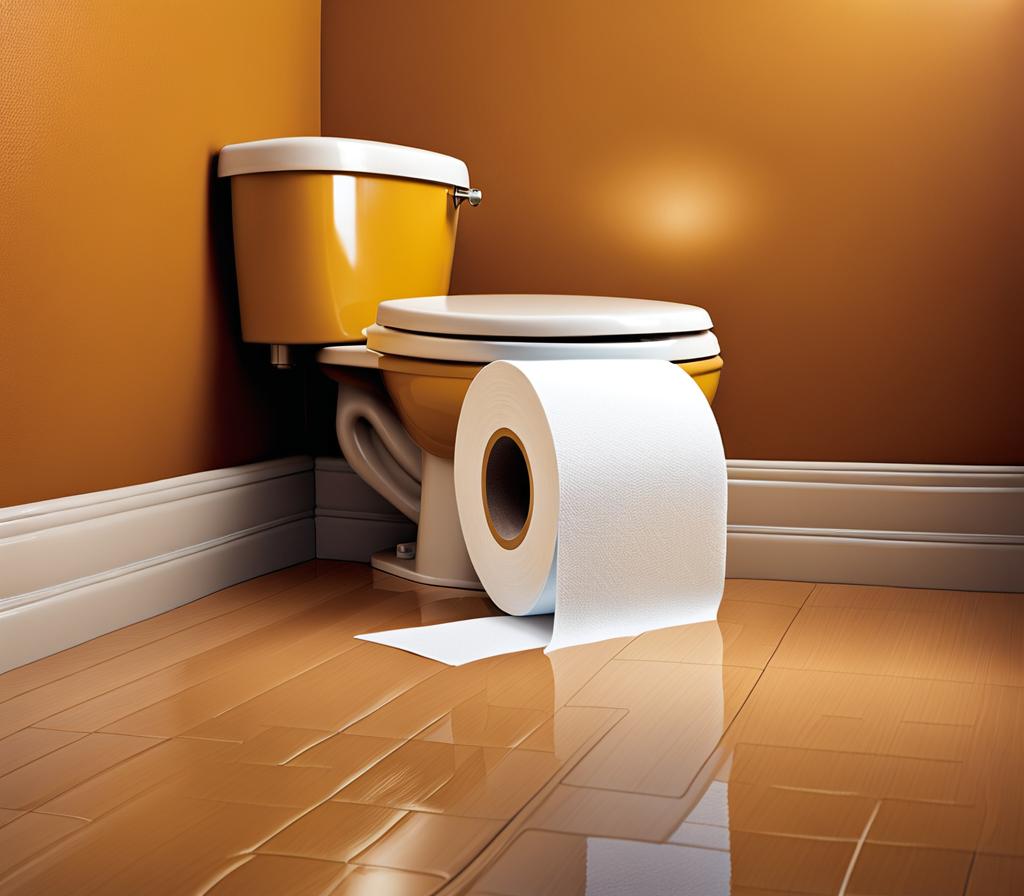When it comes to owning a septic tank, one of the most crucial aspects to consider is how you flush toilet paper with septic tank. This seemingly simple task can have a significant impact on the overall health and longevity of your septic system. As a septic tank owner, I’ve learned firsthand the importance of proper toilet paper flushing, and I’m here to share my knowledge with you.
Septic Tank 101: Understanding the System
Before we dive into the dos and don’ts, let’s first understand what a septic tank is and how it works. A septic tank is an underground, watertight container that treats and disposes of household wastewater. It’s designed to separate solids from liquids, allowing the liquids to drain into a leach field or a drainage system while the solids remain in the tank to decompose.
Toilet paper plays a crucial role in this process. When flushed, it should break down quickly and efficiently, without clogging the system or disrupting the delicate balance of bacteria responsible for breaking down solid waste. Improper toilet paper disposal can lead to clogs, backups, and even premature septic tank failure, which can be costly and inconvenient.

Toilet Paper Flushing: The Right Way
To ensure your septic tank remains in top shape, it’s essential to follow the proper toilet paper flushing techniques. Here are the dos:
- Choose septic-safe toilet paper: Look for toilet paper specifically designed for septic systems. These products are made to break down quickly and efficiently, reducing the risk of clogs and backups.
- Flush only a reasonable amount: Avoid flushing excessive amounts of toilet paper at once. Too much paper can overwhelm the system and lead to clogs.
- Use the recommended flushing technique: Follow the manufacturer’s instructions on how to flush properly. Generally, it’s best to flush after every use and avoid letting waste accumulate.
By following these simple steps, you’ll be well on your way to maintaining a healthy septic tank and avoiding costly repairs.
Common Toilet Paper Flushing Mistakes
On the flip side, there are certain mistakes that can wreak havoc on your septic system. Here are the don’ts:
- Don’t use excessive amounts of toilet paper: Flushing too much toilet paper at once can quickly overwhelm your septic tank, leading to clogs and backups.
- Don’t flush non-dissolvable materials: Items like feminine hygiene products, wet wipes, and paper towels can clog your system and should never be flushed.
- Don’t ignore clogs or backups: If you notice slow draining or backups, address the issue immediately. Ignoring these signs can lead to more severe problems down the line.
By avoiding these common mistakes, you’ll be taking proactive steps to protect your septic tank and prevent costly repairs or replacements.
Septic Tank Maintenance and Toilet Paper
Proper toilet paper flushing is just one aspect of septic tank maintenance. To ensure your system remains in top condition, it’s essential to follow these additional steps:
- Stick to the recommended toilet paper usage: Follow the manufacturer’s guidelines on how much toilet paper your septic tank can handle.
- Schedule regular inspections: Have your septic tank inspected by a professional every 2-3 years to identify and address any potential issues.
- Seek professional services when needed: If you notice persistent clogs, backups, or other issues, don’t hesitate to contact a septic tank professional for assistance.
By incorporating these maintenance practices into your routine, you’ll be taking a proactive approach to ensuring the longevity of your septic tank.
Eco-Friendly Toilet Paper Alternatives
As a septic tank owner, you may be interested in exploring eco-friendly toilet paper alternatives that are not only gentle on your septic system but also environmentally conscious. Here are some options to consider:
- Biodegradable toilet paper: Look for toilet paper made from renewable resources like bamboo or sugarcane, which breaks down more easily in septic tanks.
- Recycled toilet paper: Choosing toilet paper made from recycled materials can help reduce your environmental impact while still being septic-safe.
- Minimize toilet paper usage: Consider alternative methods like bidet attachments or reusable cloths to reduce your overall toilet paper consumption.
By exploring these eco-friendly alternatives, you’ll be doing your part in minimizing waste and reducing your environmental footprint while still prioritizing the health of your septic tank.
Despite your best efforts, toilet paper flushing issues may still arise from time to time. When faced with these situations, it’s essential to act quickly and appropriately. Here are some troubleshooting tips:
- Unclogging a toilet: If you encounter a clogged toilet connected to your septic tank, avoid using harsh chemical drain cleaners, as they can damage the septic system. Instead, try using a plunger or a septic-safe drain snake to dislodge the clog gently.
- Identifying septic tank failure: If you notice persistent backups, foul odors, or standing water around your septic tank, these could be signs of a more severe issue like septic tank failure. Contact a professional immediately for an inspection and potential repairs or replacement.
- Addressing toilet paper backups: If toilet paper seems to be the culprit behind a backup, try switching to a septic-safe toilet paper brand and flushing less frequently. If the issue persists, it may be time to have your septic tank inspected and possibly pumped.
By being proactive and addressing issues promptly, you’ll be better equipped to tackle toilet paper flushing problems before they escalate into more significant and costly issues.

This is where you’ll find inspiration to create a stylish and beautiful dream home.